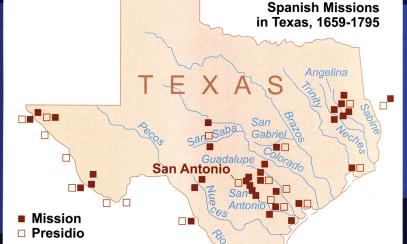
Historic Chapels Are Hidden Gems in the Diocese
The Diocese of Austin has four historic chapels. These churches are still maintained, but they are in areas where the population has declined. Masses and other services are held infrequently, and most have cemeteries on their grounds. Once important centers of prayer in the lives of the faithful, these sites are preserved for their historic value. The chapels include Sts. Peter and Paul in Kovar, St. Mary’s Help of Christians in Twin Sisters, Sacred Heart in Latium and St. Martin near Warrenton.
Sts. Peter and Paul in Kovar is located in Bastrop County, eight miles from Smithville off Highway 95 and CR 312 on Stolle Lane. Martin Kovar came to the area about 1870, and other Czech-Moravian settlers subsequently followed. The agricultural community of Kovar centered around its cotton gin. On land donated to the Diocese of San Antonio by Anton and Sophia Psencik, Sts. Peter and Paul Catholic Church was constructed using local lumber in 1921. Parishioners built the church, which was led by Father John Andres. The white wood-frame church, surrounded by oak trees, comfortably seats 75. Its ornate 20-foot altar is embellished with gold leaf. An octagonal oak baptistry, a pump organ, a pine confessional and 10 long pews are situated under a 25-foot domed ceiling. In 1988, the decision was made to cease holding regular Masses at the church, which now has Mass on All Souls Day and on the feast of Sts. Peter and Paul. Upkeep of the church and nearby Barton’s Creek Catholic Cemetery is seen to by descendants of the church’s organizing families under the direction of St. Paul Parish in Smithville.
St. Mary’s Help of Christians in Twin Sisters, the first Catholic church in Blanco County, is located near the Little Blanco River. Some might mistake this simple yet beautiful edifice that seats 35 for a private chapel. German families relocated to the area from New Braunfels and formed a Catholic faith community in the 1850s, meeting in homes or a community hall for half a century. Masses were celebrated sporadically until 1898 when the parish was formally organized. A church was built with locally sourced materials on land carved out from the John Kneupper ranch under the direction of Father Virgilius Dressel, who served in a parish 30 miles away (a half-day trip on horseback or by buggy).
A cemetery with a distinctive large wooden cross was established adjacent to the church. After the church was built, Mass was never celebrated more than once or twice monthly, and in 1940, when St. Ferdinand Parish in Blanco was organized, the Twin Sisters church ceased regular Masses. Today St. Ferdinand Parish maintains the chapel, which offers Mass on All Souls Day.
The other two chapels will be featured in the April issue of the Catholic Spirit.
Karl Kuykendall is a retired commercial bank executive and is a member of St. Mary Parish in Temple. He has lived in the Diocese of Austin for more than 50 years. He is the author of Faith & Inspiration: The History of the Catholic Church in Central Texas, which was recently published by Amazon.



